In this example, we will create a jersey RESTful API web application using jersey-quickstart-webapp maven archetype in eclipse.
Table of Contents Install remote archetypes in eclipse Create new maven project using jersey-quickstart-webapp Generated Files Run The Application
Install remote archetypes in eclipse
The very first step before creating actual maven quick-start application, is to install quick-start definitions in eclipse. It’s very simple process and I have already covered this information in previous tutorial.
Read More: How to Import Maven Remote Archetype Catalogs in Eclipse
Create new maven project using jersey-quickstart-webapp
Now let’s create new maven project.
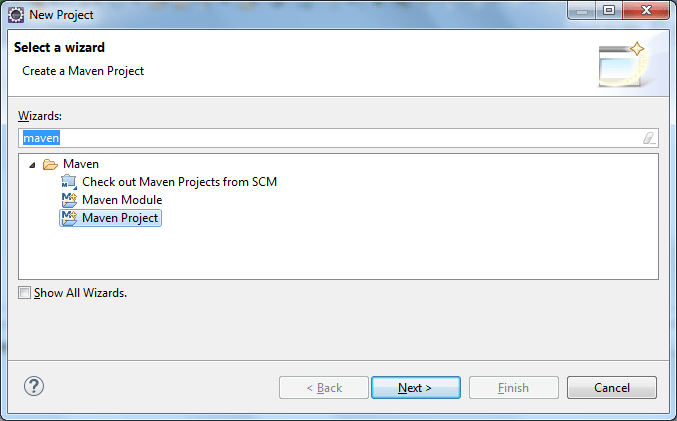
Select default/other workspace.
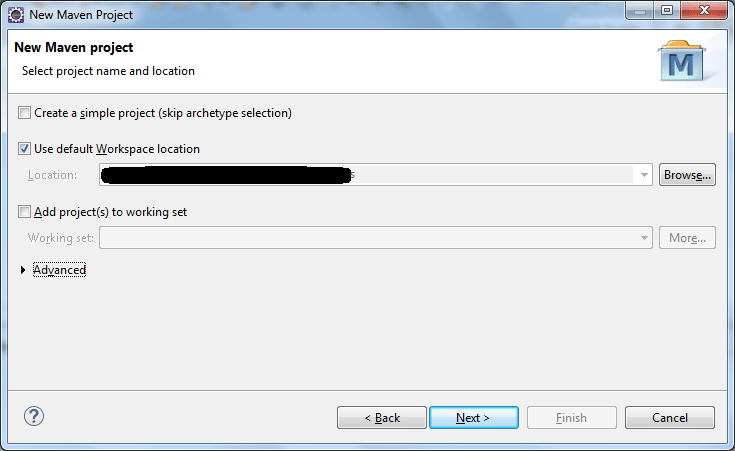
Select jersey-quickstart-webapp version.
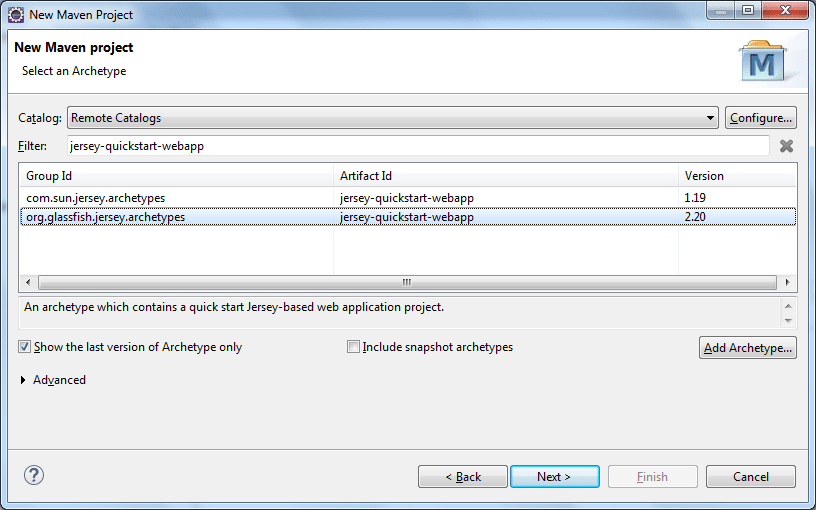
Fill artifact Id and Group Id.

Click ‘OK’ to create this project. Project will be created in workspace.
Generated Files
Let’s look at generated files.
Folder Structure
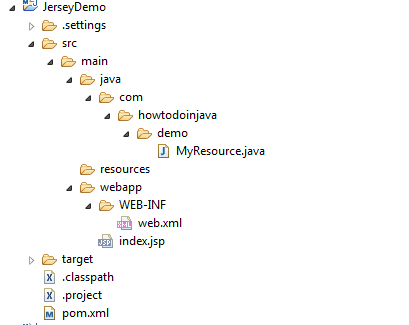
web.xml
<?xml version="1.0" encoding="UTF-8"?>
<!-- This web.xml file is not required when using Servlet 3.0 container,
see implementation details https://github.com/jax-rs -->
<web-app xmlns:xsi="http://www.w3.org/2001/XMLSchema-instance" xmlns="http://java.sun.com/xml/ns/javaee" xsi:schemaLocation="http://java.sun.com/xml/ns/javaee https://www.oracle.com/java/technologies/; version="2.5">
<servlet>
<servlet-name>Jersey Web Application</servlet-name>
<servlet-class>org.glassfish.jersey.servlet.ServletContainer</servlet-class>
<init-param>
<param-name>jersey.config.server.provider.packages</param-name>
<param-value>com.howtodoinjava.demo</param-value>
</init-param>
<load-on-startup>1</load-on-startup>
</servlet>
<servlet-mapping>
<servlet-name>Jersey Web Application</servlet-name>
<url-pattern>/webapi/*</url-pattern>
</servlet-mapping>
</web-app>
pom.xml
<project xmlns="http://maven.apache.org/POM/4.0.0" xmlns:xsi="http://www.w3.org/2001/XMLSchema-instance"
xsi:schemaLocation="http://maven.apache.org/POM/4.0.0 ;
<modelVersion>4.0.0</modelVersion>
<groupId>com.howtodoinjava.demo</groupId>
<artifactId>JerseyDemo</artifactId>
<packaging>war</packaging>
<version>0.0.1-SNAPSHOT</version>
<name>JerseyDemo</name>
<build>
<finalName>JerseyDemo</finalName>
<plugins>
<plugin>
<groupId>org.apache.maven.plugins</groupId>
<artifactId>maven-compiler-plugin</artifactId>
<version>2.5.1</version>
<inherited>true</inherited>
<configuration>
<source>1.7</source>
<target>1.7</target>
</configuration>
</plugin>
</plugins>
</build>
<dependencyManagement>
<dependencies>
<dependency>
<groupId>org.glassfish.jersey</groupId>
<artifactId>jersey-bom</artifactId>
<version>${jersey.version}</version>
<type>pom</type>
<scope>import</scope>
</dependency>
</dependencies>
</dependencyManagement>
<dependencies>
<dependency>
<groupId>org.glassfish.jersey.containers</groupId>
<artifactId>jersey-container-servlet-core</artifactId>
<!-- use the following artifactId if you don't need servlet 2.x compatibility -->
<!-- artifactId>jersey-container-servlet</artifactId -->
</dependency>
<!-- uncomment this to get JSON support
<dependency>
<groupId>org.glassfish.jersey.media</groupId>
<artifactId>jersey-media-moxy</artifactId>
</dependency>
-->
</dependencies>
<properties>
<jersey.version>2.20</jersey.version>
<project.build.sourceEncoding>UTF-8</project.build.sourceEncoding>
</properties>
</project>
MyResource.java
package com.howtodoinjava.demo;
import javax.ws.rs.GET;
import javax.ws.rs.Path;
import javax.ws.rs.Produces;
import javax.ws.rs.core.MediaType;
/**
* Root resource (exposed at "myresource" path)
*/
@Path("myresource")
public class MyResource {
/**
* Method handling HTTP GET requests. The returned object will be sent
* to the client as "text/plain" media type.
*
* @return String that will be returned as a text/plain response.
*/
@GET
@Produces(MediaType.TEXT_PLAIN)
public String getIt() {
return "Got it!";
}
}
Run the Application
For hello world usage, you don’t need to do anything in this project. Everything is configured. Just deploy the application.
Hit URL : http://localhost:8080/JerseyDemo/webapi/myresource

Drop me your questions in comments section.
Happy Learning !!

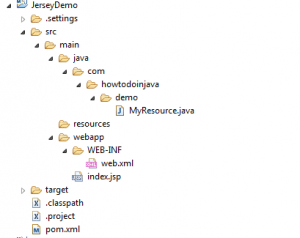
Comments